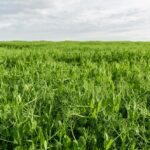Anthracnose is a fungal disease that can affect olives. It typically occurs in warm, humid climates and can cause significant damage to olive crops if not properly managed. Here are some common symptoms of anthracnose in olives:
- Dark, sunken lesions: Anthracnose-infected olives often develop dark, sunken lesions on the surface. These lesions are usually small at first but can enlarge over time. They may appear black or brown and have a slightly sunken or depressed appearance.
- Spots on leaves and twigs: The fungus responsible for anthracnose can also infect olive leaves and twigs. Infected leaves may exhibit small, dark spots or lesions. Twigs can develop sunken cankers or dieback.
- Premature fruit drop: Anthracnose can cause olives to drop prematurely from the tree. If you notice a significant amount of fruit falling off the tree before they are fully mature, it could be a sign of anthracnose infection.
- Discolored fruit flesh: When anthracnose affects olives, the flesh of the fruit can become discolored. It may develop brown or black spots, and the affected areas can have a soft, mushy texture.
- Formation of spore masses: In advanced stages of anthracnose infection, you may observe the formation of spore masses on the surface of lesions. These spore masses may appear as pink, orange, or black masses, depending on the stage of the disease.
It’s important to note that other diseases or factors can cause similar symptoms in olives. If you suspect anthracnose or any other disease affecting your olive trees, it’s best to consult with a local agricultural extension service or a plant pathologist for an accurate diagnosis and appropriate management strategies.
Join 'Farmers Mag' WhatsApp Channel
Get the latest Farming news and tips delivered straight to your WhatsApp
CLICK HERE TO JOIN






